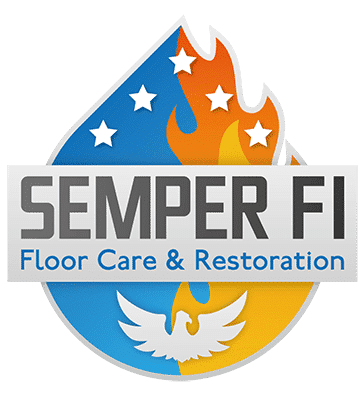Discovering mold growing in your ceiling after a water leak can be unsettling and dangerous. Mold is more than just an eyesore—it poses serious health risks and can lead to significant structural damage if not addressed promptly. Water leaks, especially those that go unnoticed for some time, create the perfect environment for mold to thrive. If you suspect or see signs of mold from a ceiling leak, it’s critical to act quickly and decisively.
At Semper Fi, we specialize in water damage restoration and mold remediation, helping homeowners and businesses in Arizona reclaim their safe and healthy indoor environments.
Understanding How Ceiling Leaks Lead to Mold
Mold grows when excess moisture is trapped in organic materials like drywall, insulation, and wood. A ceiling leak introduces water into these porous materials, and if it’s not dried quickly, mold spores begin to multiply—often within just 24 to 48 hours. What makes mold from ceiling leaks especially tricky is that it often remains hidden until stains, odors, or health symptoms appear.
Whether the leak came from a damaged roof, plumbing issue, or HVAC system, once mold sets in, it spreads rapidly. Mold doesn’t just damage the surface—it breaks down materials, reduces air quality, and can cause respiratory issues, allergic reactions, and more severe health complications in sensitive individuals.
Signs of Mold After a Ceiling Leak
Mold isn’t always visible, especially in the early stages. Watch for these signs:
- A persistent musty odor that lingers even after cleaning
- Discoloration on ceilings or walls
- Bubbling or peeling paint
- Visible black, green, or brown spots indicating mold growth
- Health symptoms such as coughing, sneezing, sinus congestion, or itchy eyes that worsen when indoors
- Presence of a leak lasting more than a day or two without proper drying measures, increasing the likelihood of hidden mold behind ceilings or walls
If you notice any of these signs, it’s important to act quickly to address the problem.
Why DIY Mold Removal Can Be Risky
Many homeowners are tempted to handle mold removal themselves, especially for what appears to be a small area. However, mold remediation is a highly sensitive process. Scrubbing visible mold without proper containment can release spores into the air, causing them to spread to other parts of the home. Inadequate protective gear can expose you to harmful airborne mold particles, and without moisture detection equipment, you risk missing hidden colonies.
DIY methods may fail to address the root cause of the mold—ongoing moisture—and also can be risky. That’s why it’s essential to not just clean up the visible mold, but also repair the leak, dry all affected materials thoroughly, and treat the area with antimicrobial solutions.
The Professional Mold Remediation Process
When dealing with water damage and mold in ceilings, the restoration process typically begins with a thorough moisture inspection to locate all affected areas, including hidden spots behind walls or insulation. The next step is to isolate the damaged area to prevent mold spores or contaminants from spreading to other parts of the property. Damaged materials like drywall or insulation are carefully removed, followed by a deep cleaning and disinfection of all surfaces. Industrial-grade drying equipment is then used to eliminate remaining moisture from the air and building materials. Finally, mold inhibitors are applied to reduce the risk of future growth, and any removed materials are repaired or replaced to restore the ceiling’s original condition.
Choosing a trusted and experienced company like Semper Fi ensures this process is handled efficiently and safely, minimizing damage and protecting your home’s health.
Health Risks of Ignoring Mold in Ceilings
Ignoring mold caused by ceiling leaks can lead to serious consequences. Mold spores can become airborne and infiltrate your HVAC system, spreading throughout your home. Prolonged exposure can cause allergic reactions, breathing difficulties, and other chronic health problems, particularly in children, the elderly, and those with compromised immune systems.
In addition to health concerns, mold weakens structural integrity. Ceiling joists, wood framing, and drywall can deteriorate, leading to costly repairs or even a partial collapse if left untreated. That’s why immediate professional intervention is the best choice for your health and your property’s value.
Preventing Mold From Future Leaks
Once the mold is removed and the ceiling is restored, prevention becomes the focus. Regular home maintenance, especially after rainstorms or plumbing work, is key. Inspect your attic and ceilings for signs of leaks and repair any damage promptly. Consider having your roof and plumbing system professionally inspected at least once a year.
Proper ventilation is also crucial. Make sure bathrooms, kitchens, and attics have adequate airflow, and use dehumidifiers in humid areas of your home. If you ever notice new moisture or odors, act fast—mold can return if moisture does.
Conclusion
Mold caused by a ceiling leak is more than just an unsightly problem—it signals hidden water damage that can threaten your home’s structure and your family’s health. Prompt and professional mold remediation is essential to fully address the issue and prevent future complications. Semper Fi’s experienced and certified team is equipped to respond quickly with advanced techniques and equipment, ensuring thorough mold removal and lasting restoration. Don’t let mold take over your home—call Semper Fi at (928) 228-4960 for expert inspection, emergency response, and reliable remediation that brings your ceiling and your peace of mind back to life.


